| ¤ |
 Questionable occurrence in sub-Saharan Africa as all
early records and
may be aegyptiacus - i.e. with propodeal teeth or spines; if
true barbarus would lack a distinct psammophore Questionable occurrence in sub-Saharan Africa as all
early records and
may be aegyptiacus - i.e. with propodeal teeth or spines; if
true barbarus would lack a distinct psammophore |
Ethiopia, Somalia &
Sudan - barbarus |
| ¤ |
Queen only - nomen nudum |
Namibia - incisus |
| 1 |
First gastral tergite
without
hairs or no more than a single posterior transverse row |
2 |
| -- |
First gastral tergite with hairs more or
less
evenly distributed over whole surface |
8 |
| 2 |
Dorsum of propodeum with
one
or more pairs of standing hairs |
3 |
| -- |
Dorsum of propodeum without standing hairs
(M. ferreri seems inconsistent)
|
7 |
| 3 |
Propodeum without any
sign of
teeth (note some large specimens of galla have triangular
flanges at the junction of the propodeum dorsum and declivity) |
4 |
| -- |
Propodeum always with teeth |
6 |
| 4 |
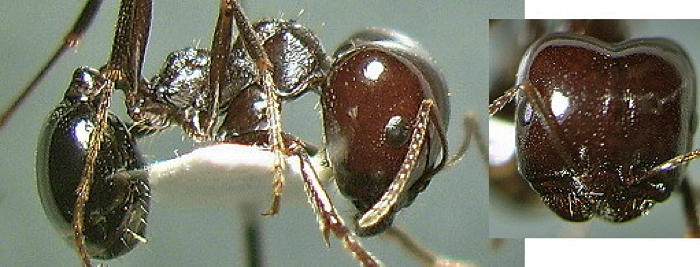 Petiole without a
tooth at posteroventral corner; dorsum
of head entirely smooth other than a rugulose mid-dorsal strip; TL 4-12
mm; red-headed, alitrunk often darker (varieties with overall darker
shading) Petiole without a
tooth at posteroventral corner; dorsum
of head entirely smooth other than a rugulose mid-dorsal strip; TL 4-12
mm; red-headed, alitrunk often darker (varieties with overall darker
shading) |
Sahel
zone
and NE Africa - galla |
| -- |
Petiole with distinct tooth at
posteroventral
corner; scapes of major reaching to slightly exceeding occipital margin
|
5 |
| 5 |
 TL 7-9 mm; head wider
than long with parallel sides;
petiole with distinct rugose sculpturation; dark
reddish to blackish-brown, funiculi & tarsi light brown. TL 7-9 mm; head wider
than long with parallel sides;
petiole with distinct rugose sculpturation; dark
reddish to blackish-brown, funiculi & tarsi light brown.
Stitz drawing is a media worker.
|
. |
| . |
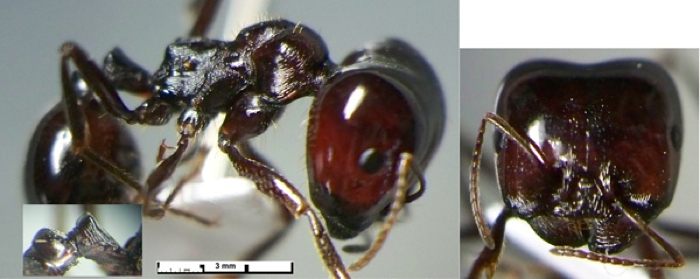 Major not reported
before TL ca 13 mm Major not reported
before TL ca 13 mm |
Congo
&
Sudan - ruginodis |
| -- |
 Holotype
worker TL 11.2 mm; major entirely black, media (?) with reddish-head;
petiole weakly sculptured, with a narrow node profile; propodeum obtusely angled Holotype
worker TL 11.2 mm; major entirely black, media (?) with reddish-head;
petiole weakly sculptured, with a narrow node profile; propodeum obtusely angled
|
.
|
.
|
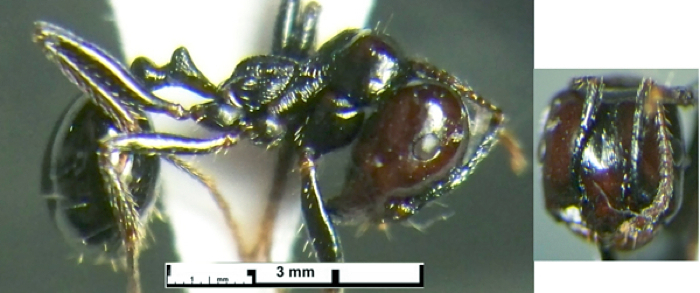 Media
(?) Media
(?)
|
Kenya & Ethiopia - ferreri |
| -- |
Propodeum always with teeth |
-- |
| 6 |
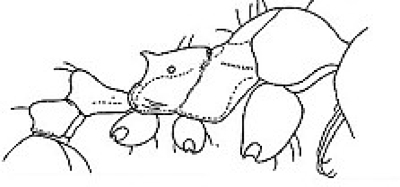 Dorsum
of head with coarse dense reticulo-punctate sculpturation all over;
uniform very dark blackish-brown Dorsum
of head with coarse dense reticulo-punctate sculpturation all over;
uniform very dark blackish-brown |
. |
| . |
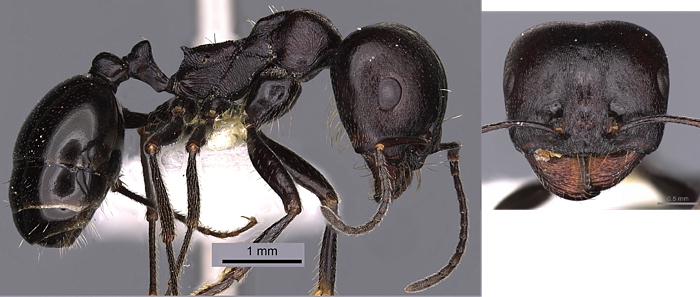 |
Niger,
Mali - collingwoodi |
| -- |
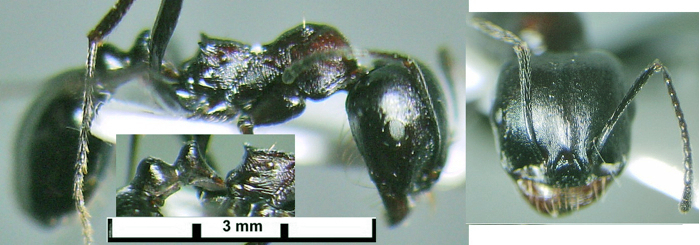 TL
4-8 mm; generally ferruginous, gaster piceus; overall matt; probably
without hairs on the propodeum; well developed psammophore; propodeal
teeth variable but always present TL
4-8 mm; generally ferruginous, gaster piceus; overall matt; probably
without hairs on the propodeum; well developed psammophore; propodeal
teeth variable but always present |
Sudan & Egypt, North
Africa
- aegyptiacus
|
| -- |
Dorsum of propodeum without standing hairs |
-- |
| 7 |
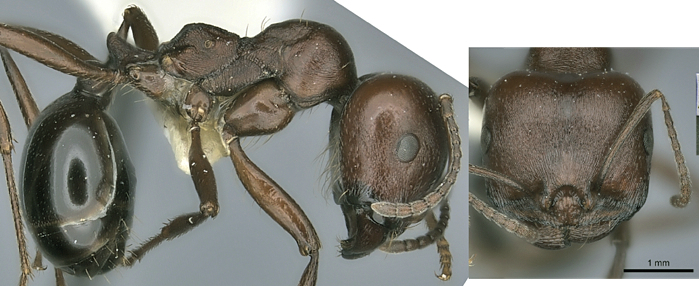 Head wholly covered with
dense
longitudinal rugulae, with reticulo-punctate ground sculpturation; TL
5-8 mm; red, posterior of gaster dark brown Head wholly covered with
dense
longitudinal rugulae, with reticulo-punctate ground sculpturation; TL
5-8 mm; red, posterior of gaster dark brown |
Southern
Africa - luebberti |
| -- |
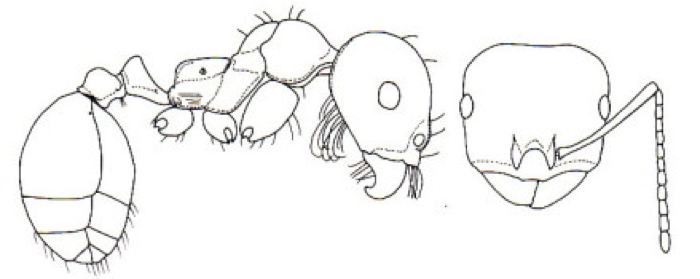 Head
entirely smooth, sometimes with a short central rugulose area; TL 5-7
mm (major unknown); more generally dark Head
entirely smooth, sometimes with a short central rugulose area; TL 5-7
mm (major unknown); more generally dark |
. |
| . |
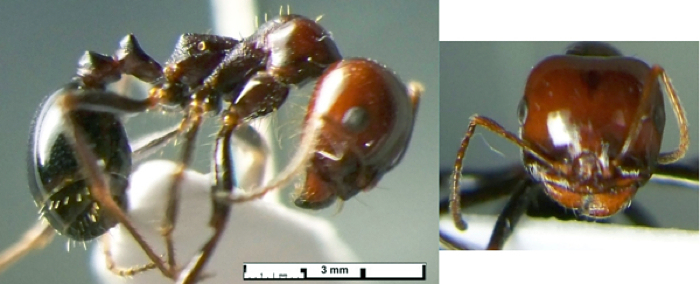 |
Kenya & Sudan - angularis |
 |
First gastral tergite with hairs more or less evenly
distributed over whole surface |
-- |
| 8 |
Basal third of first
gastral
tergite strongly and conspicuously sculptured with rugulae, costulae,
coarse reticulopuncturation, or a combination |
9 |
| -- |
Basal third of first gastral tergite
unsculptured except for hair pits and very faint patterning |
10 |
| 9 |
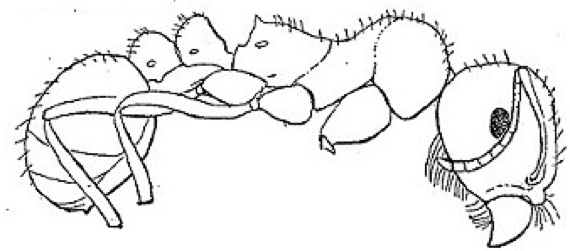 In
full-face view head with lateral projecting hairs; petiole and
postpetiole coarsely rugose; TL 6-12 mm; generally dark red, head
lighter with anterior angles blackish; appendages and gaster dark
red-brown In
full-face view head with lateral projecting hairs; petiole and
postpetiole coarsely rugose; TL 6-12 mm; generally dark red, head
lighter with anterior angles blackish; appendages and gaster dark
red-brown |
. |
| . |
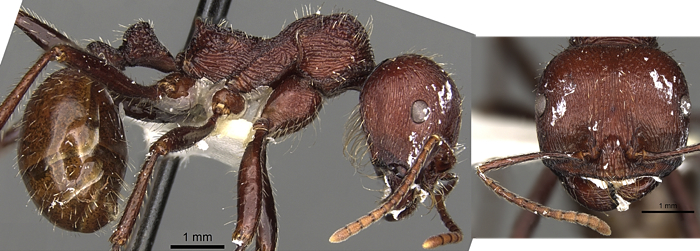 |
West
Africa
& Congo Basin - regalis |
| -- |
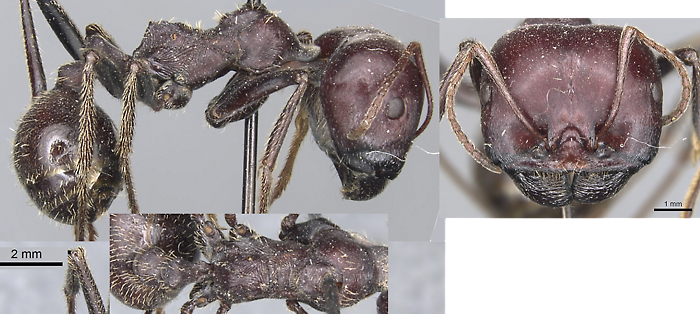 In
full-face view head without lateral projecting hairs; petiole and
postpetiole finely sculptured; TL 6.5-13 mm (largest major workers to
18 mm); red to reddish dark-brown, often with gaster darker than head
and alitrunk In
full-face view head without lateral projecting hairs; petiole and
postpetiole finely sculptured; TL 6.5-13 mm (largest major workers to
18 mm); red to reddish dark-brown, often with gaster darker than head
and alitrunk
|
East Africa - cephalotes |
| 10 |
Posterior half of
clypeus with
a distinct raised central step or welt |
11 |
| -- |
Posterior half of clypeus without a
distinct
raised central step or welt, usually flat or slightly concave |
12 |
| 11 |
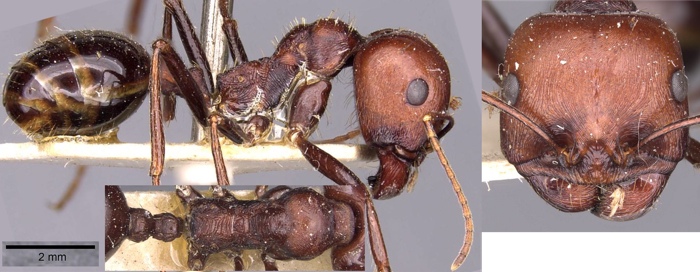 TL 7-11 mm; all red
except
gaster TL 7-11 mm; all red
except
gaster |
Angola
&
Namibia - tropicorum |
| -- |
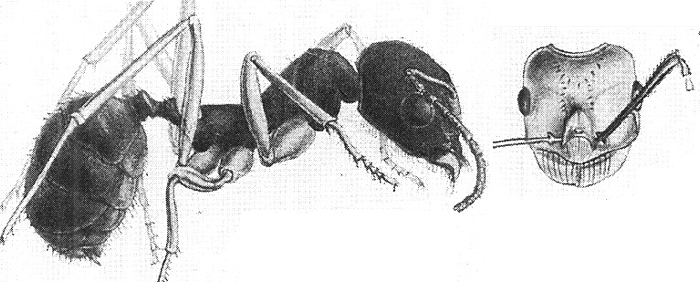 Eyes
relatively large, ca 0.25 HW, in HW range 2.50 to > 4.00; TL 5.5-11
mm; slender with relatively small head; base of scape with a small
tooth; more or less uniform dark brown or brownish-red, appendages
lighter to yellowish; pilosity reddish Eyes
relatively large, ca 0.25 HW, in HW range 2.50 to > 4.00; TL 5.5-11
mm; slender with relatively small head; base of scape with a small
tooth; more or less uniform dark brown or brownish-red, appendages
lighter to yellowish; pilosity reddish |
. |
| . |
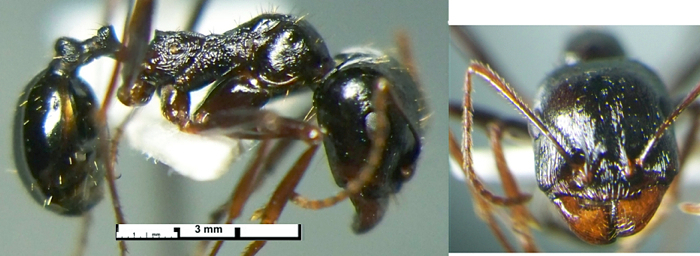 . . |
Southern Africa - denticornis |
| 12 |
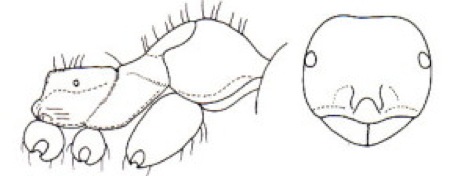 In
HW range 2.80 to > 4.00 sides of head conspicuously evenly convex;
propodeal profile relatively long & low In
HW range 2.80 to > 4.00 sides of head conspicuously evenly convex;
propodeal profile relatively long & low |
. |
| . |
Thumbnail may be a media worker
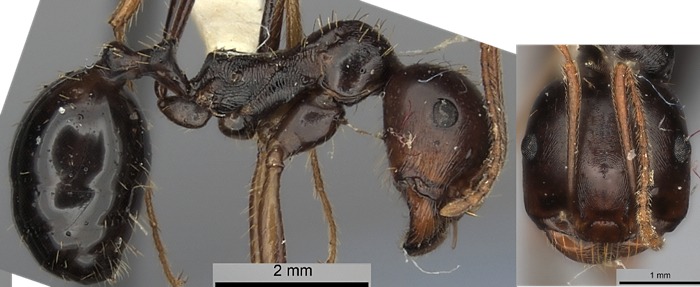 |
Southern
Africa - striatifrons |
| -- |
In HW range 2.80 to > 4.00 sides of
head
approxinmately straight; propodeal profile relatively short & high |
13 |
| 13 |
 Body
pilosity very dark,
deep
red-brown to blackish Body
pilosity very dark,
deep
red-brown to blackish
thumbnail of probable media worker
|
Southern
Africa - piceus |
| -- |
Body pilosity pale, white or silvery to
yellowish |
14 |
| 14 |
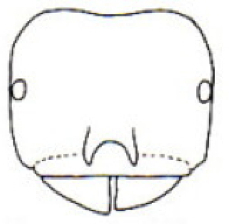 Head
of major workers red, alitrunk and gaster much darker; TL 4.5-9 mm;
head of majors one-sixth wider than long Head
of major workers red, alitrunk and gaster much darker; TL 4.5-9 mm;
head of majors one-sixth wider than long |
. |
| . |
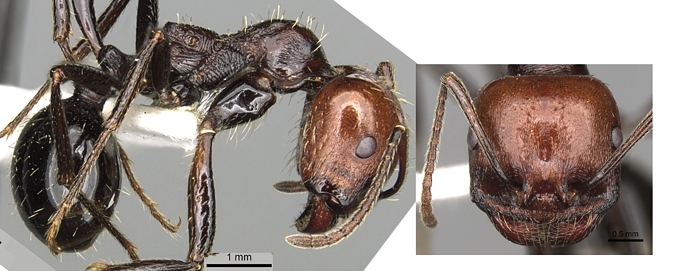 |
Southeast
Africa - decipiens |
| -- |
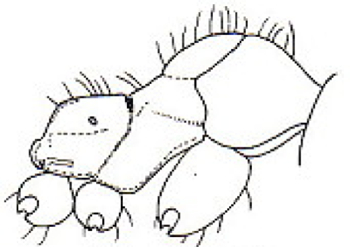 Head of
major workers brown to black, more or less concolourous with alitrunk
and gaster; TL 6-11 mm Head of
major workers brown to black, more or less concolourous with alitrunk
and gaster; TL 6-11 mm |
. |
| . |
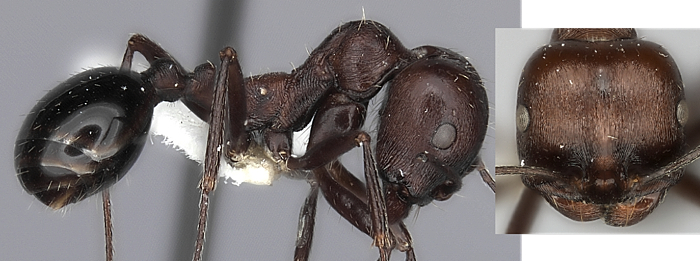 |
Southern Africa - capensis |